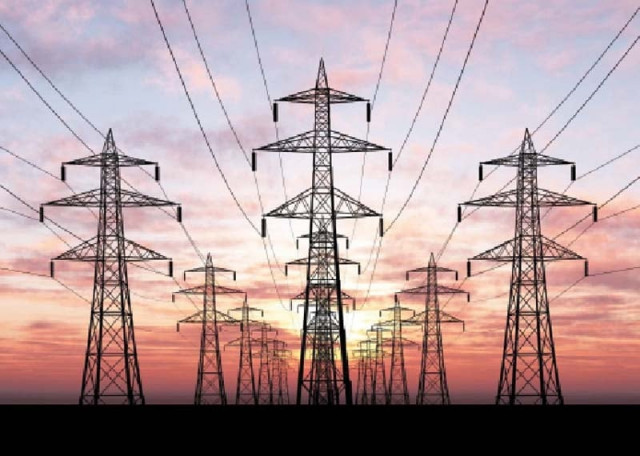Capacity payments to haunt power users
People likely to pay Rs2.8tr in capacity payments in FY 2024-25

Electricity consumers are set to pay capacity payments amounting to Rs2.8 trillion during the upcoming financial year 2024-25. These payments account for 70% of the electricity tariff for consumers, with the remaining 30% attributed to energy costs.
These capacity payments are linked to dollar indexation, which has increased due to the rupee's depreciation against the dollar over the past year. Alarmingly, even power plants that made investments in rupees in Pakistan are receiving capacity payments in dollars. For the current financial year, capacity payments have been estimated at Rs2.1 trillion.
Capacity payments are made to power plants that remain idle, receiving payments without generating a single unit of electricity due to faulty agreements.
At a public hearing held by the National Electric Power Regulatory Authority (NEPRA) on Thursday, the Central Power
Purchasing Agency (CPPA-G) presented different scenarios of electricity rates for the upcoming financial year, indicating an expected hike of Rs5 per unit, which would burden consumers with Rs310 billion.
During the presentation, it was disclosed that the energy purchase price (EPP) amounted to Rs1.3 trillion, and capacity payments stood at Rs2.146 trillion for the next financial year. CPPA-G officials informed NEPRA that capacity payments could vary between Rs2.1 trillion and Rs2.8 trillion.
Regarding demand projection, power ministry officials noted that a GDP growth target of 3.5% was considered, aligning with the IMF projection. They said the Planning Commission had been asked to provide GDP growth projections for the next financial year but had not done so. Consequently, reliance was placed on the IMF's projections for Pakistan.
During the hearing, it was noted that CPPA-G had submitted electricity demand projections without conducting proper work. On the topic of net metering, it was informed that 83 megawatts (MW) of electricity from solar were being added to the national grid. However, figures for off-grid solar electricity generation were unavailable.
The work on net metering began in 2015 but gained momentum in the last year. Around 870 MW from solar net metering were added in the past eight months. It was also noted that solar-based electricity is increasingly replacing regular electricity in industries. NEPRA emphasized the need for actual electricity demand to achieve a realistic electricity price for budgeting.
It was informed that consumers were reducing electricity consumption due to higher prices, and several industrial units had shut down for the same reason. Consequently, electricity consumption is expected to fall further due to the anticipated rate increase in the next financial year.
Read 'Sindh to resist tax on solar panels'
Despite rising capacity payments, more independent power producers (IPPs) are being installed, with three more IPPs recently connected to the national grid.
The CPPA-G submitted the projected power purchase for the fiscal year (FY) 2024-25. In its petition, submitted on behalf of distribution companies (DISCOs), the total power purchase price for the next fiscal year was projected to be Rs3.58 trillion, approximately Rs310 billion higher than the existing power purchase price (PPP) of Rs3.28 trillion.
The CPPA-G also presented the Projected Power Purchase Price report for FY 2024-25, outlining seven scenarios for the authority's consideration, aimed at determining the tariff for consumers for the fiscal year 2024-25.
The scenarios involved different levels of demand growth—ranging from 3% to 5%, exchange rates with the rupee valued at 275 and 300, and hydrological conditions during normal and dry seasons.
The CPPA-G projection suggested that electricity consumers would bear 2.40% of the inflation, which is proposed to be incorporated into the tariff, 12.20% of domestic inflation, an interest charge of 21.37%, and 5.31% on electricity purchases, and a market operator fee of Rs3.48 per unit.
Fuel costs ranging from Rs8.61 per unit to Rs9.34 per unit were also proposed under various scenarios. Additionally, capacity charges were projected to range from Rs15.49 per unit to Rs17.42 per unit for 2024-25.
During the ongoing fiscal year, capacity payments accounted for 71% of the PPP, while energy costs constituted approximately 29% of the total projected PPP. For 2023-24, capacity charges were Rs16.22 per unit, whereas energy charges were Rs6.73 per unit. The total power purchase price under seven scenarios has been projected to range from Rs25.03 per unit to Rs27.11 per unit for the next fiscal year.
The increase in the PPP has been projected to range from Rs2.07 per unit to Rs4.16 per unit under various scenarios. In addition to the PPP, the base tariff also includes the distribution margin for DISCOs, as well as transmission and distribution losses.
The distribution margins of DISCOs for the ongoing fiscal year are Rs3.10 per unit, which is likely to increase by 15 to 20%. However, if approved, consumers of DISCOs could face an additional financial strain of Rs337 billion to Rs358 billion in the upcoming fiscal year (2024-25).



















COMMENTS
Comments are moderated and generally will be posted if they are on-topic and not abusive.
For more information, please see our Comments FAQ